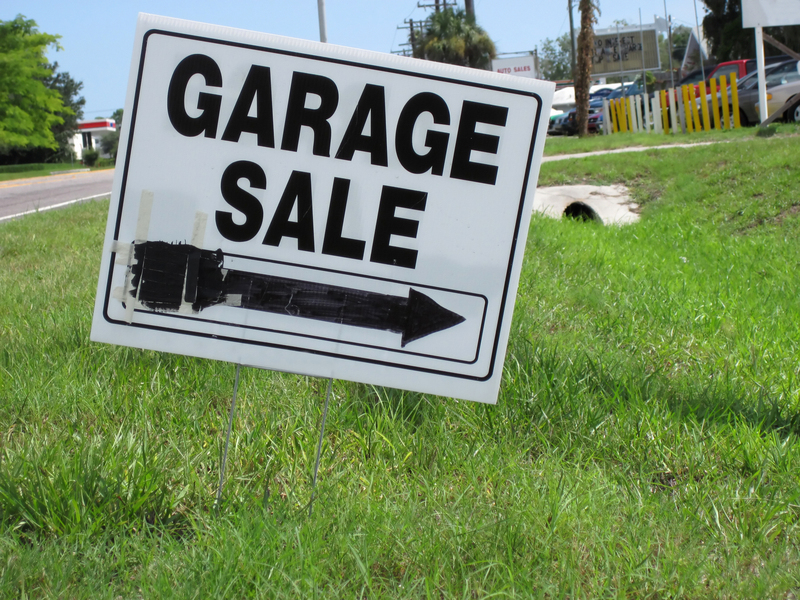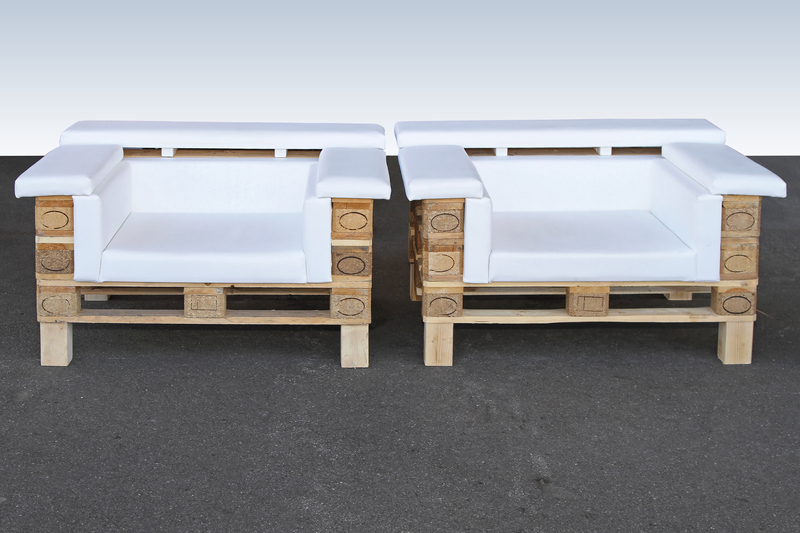The Art of Recycling Unwanted Pots and Pans
Unwanted pots and pans often end up collecting dust in the kitchen or, worse, clogging up landfills. But did you know that these kitchen essentials can be given a second life through the art of recycling? In this comprehensive guide, we explore creative, eco-friendly, and innovative methods to recycle, upcycle, and repurpose your old cookware. Whether made of stainless steel, aluminum, copper, or cast iron, there are countless ways to transform your discarded pots and pans into something valuable. Read on to discover the ultimate strategies for recycling unwanted pots and pans while minimizing your environmental impact.
Why Should You Recycle Old Pots and Pans?
The recycling of obsolete cookware is crucial for several reasons:
- Environmental Conservation: Reducing waste in landfills helps preserve natural resources.
- Resource Recovery: Valuable metals and materials can be recovered and reused.
- Creative Reuse: Old cookware can be upcycled into functional or decorative items.
- Community Support: Donating functional pans can aid those in need.
Environmental preservation is now more important than ever. By recycling unwanted pots and pans, you contribute to a greener planet and support sustainable practices. Many people are unaware of the numerous possibilities for transforming their old kitchenware. This guide shines a spotlight on the options and inspires responsible action.

Understanding the Materials: What Are Pots and Pans Made Of?
Before you recycle or repurpose, it's essential to know what materials constitute your old cookware. Pots and pans are commonly made from:
- Stainless Steel: Durable and rust-resistant, often recyclable.
- Aluminum: Lightweight, excellent heat conductor, also widely recycled.
- Copper: Highly valuable and conductive, but less common today due to cost.
- Cast Iron: Heavy and extremely long-lasting, can be recycled or restored.
- Nonstick (Teflon): Coated items require special recycling due to chemical treatments.
Each material has unique properties that affect its recycling and repurposing potential. Understanding these differences is key to making smart choices during disposal.
How to Recycle Unwanted Pots and Pans
1. Municipal Recycling Centers
Most local waste facilities accept metal cookware. Here's a step-by-step guide:
- Check Your Local Guidelines: Contact your municipal recycling center or visit their website to confirm what types of pots and pans they accept.
- Prepare Your Cookware: Remove plastic handles, non-metal parts, or glass lids. These can interfere with the recycling process.
- Drop-Off: Deliver your cleaned, prepared pots and pans to the designated site.
*Note: Some municipalities may not accept nonstick or certain coated pans due to the chemicals used in their manufacturing.
2. Scrap Metal Yards
When searching for options to dispose of metal cookware, scrap metal yards offer an effective solution. These facilities purchase scrap metal and recycle it into new products. To maximize your return, separate your cookware by material type--aluminum, stainless steel, and copper fetch higher prices when sorted.
3. Manufacturer or Retailer Take-Back Programs
Some cookware brands and retailers offer take-back programs where they collect old pots and pans for recycling when you purchase a new set. These initiatives promote responsible disposal and encourage sustainable production cycles.
4. Charities and Donation Centers
If your old pans are still functional, donation can be an excellent way to recycle them. Organizations such as Goodwill, The Salvation Army, or local shelters often welcome cookware donations. Ensure the pots and pans are clean and in usable condition before giving them away.
Upcycling: Creative Ways to Repurpose Old Pots and Pans
Some of the most rewarding ways to repurpose unwanted pots and pans involve a little creativity. With a bit of inspiration, your old cookware can adorn your home, garden, or even serve a new functional purpose.
1. Garden Planters
Stainless steel, cast iron, or aluminum pots make wonderful planters. Simply drill a few holes in the bottom for drainage, fill with potting soil, and introduce your favorite plants. This approach combines recycling and gardening, bringing color and life to balconies or patios.
2. Wall Art and Decor
Unleash your artistic side by transforming battered pans into artistic wall hangings or clocks. Painted pans, quirky arrangements, or nostalgic displays of vintage cookware create a rustic, cozy atmosphere in any kitchen or dining space.
3. Bird Feeders and Baths
Give back to nature by converting unused pans into bird feeders or baths. Attach the pan to a sturdy base or hang it from a tree, fill it with seeds or water, and enjoy the company of feathered friends in your yard.
4. Storage Solutions
Larger pots and deep pans can hold kitchen utensils, office supplies, or children's toys. With a fresh coat of paint and some creativity, they become practical storage containers that keep things organized while reducing waste.
5. Candle Holders and Lanterns
Smaller pans or pot lids can be upcycled into charming candle holders or lanterns. Punch holes in interesting patterns, add a tea light or LED, and watch as the recycled cookware adds warmth to your evenings.
Environmental Impact of Discarding Pots and Pans
When you throw away old cookware, you contribute to the ongoing issue of landfill waste. Discarded pots and pans not only occupy space, but also result in the loss of valuable resources such as metals that could otherwise be reused. The extraction of new metals is energy-intensive and environmentally damaging. By opting for recycling or upcycling, you help conserve natural resources and energy while reducing pollution.
Did you know?
- The EPA estimates millions of tons of metal are discarded annually, much from household goods like cookware.
- Metals such as aluminum and copper can be recycled indefinitely without degrading quality.
- Recycling metals saves up to 74% of the energy required to produce them from raw materials.
Tips for Maintaining Cookware for Extended Life
Prevention is as important as recycling. Proper care extends the life of your pots and pans, minimizing the need for replacement and subsequent waste. Here are some practical tips:
- Hand-wash when possible: Dishwasher detergents can damage certain finishes.
- Avoid metal utensils: Use wooden or silicone utensils to prevent scratches.
- Store carefully: Stack with protective padding or hang to prevent dents.
- Season cast iron: Regular seasoning prevents rust and improves nonstick qualities.
Adopting good habits in the kitchen reduces the frequency of cookware replacement, saving resources and money.
Frequently Asked Questions About Recycling Old Cookware
Can nonstick pots and pans be recycled?
Most municipal recycling facilities will not accept nonstick cookware due to the Teflon coating. Some specialist recyclers can handle them, but check local guidelines. Alternatively, consider upcycling or donating if the pans are still usable.
What about glass lids and plastic handles?
Remove any plastic handles or glass lids before recycling the main portion of the pot or pan. The metal part can go to metal recycling, while the other materials require different disposal methods.
Are old, warped, or burned pots and pans acceptable for donation?
Donation centers typically welcome only functional cookware. If the pot or pan is damaged beyond use, recycling or upcycling is preferable.
How do I prepare pots and pans for recycling?
Clean thoroughly, remove non-metal parts, and sort by metal type. Some scrap yards may offer higher prices if you separate stainless steel, aluminum, or copper pieces.

Where to Find Inspiration: Communities and Resources
For more innovative ways to recycle unused pans and pots, consult online communities and DIY forums such as Reddit, Pinterest, or local upcycling groups. Many creative individuals share step-by-step guides and inspiring photos for repurposing cookware.
- Pinterest: Search for 'upcycled cookware' or 'DIY garden planters from pots.'
- Local workshops: Art centers often host classes on upcycling household items.
- Recycling directories: Sites like Earth911 and RecycleNow list local recycling options by postcode.
Conclusion: Embrace the Art of Recycling Unwanted Pots and Pans
Developing the art of recycling unwanted pots and pans is a rewarding, sustainable, and creative endeavor. Old cookware doesn't have to become waste; it can gain new life as functional objects, art, or essential materials for new products. Whether you choose traditional recycling, imaginative upcycling, or charitable donation, adopting eco-friendly practices in the kitchen is a step toward a cleaner, greener future.
Next time you clean out your kitchen cupboards, think twice before tossing out that battered frying pan or dented saucepan. With a little ingenuity, your unwanted pots and pans can embark on a whole new adventure!
Start practicing sustainable kitchen habits today and inspire others to follow your lead. Share this guide with friends and family and contribute to the global effort of environmental conservation--one recycled pot at a time!
```